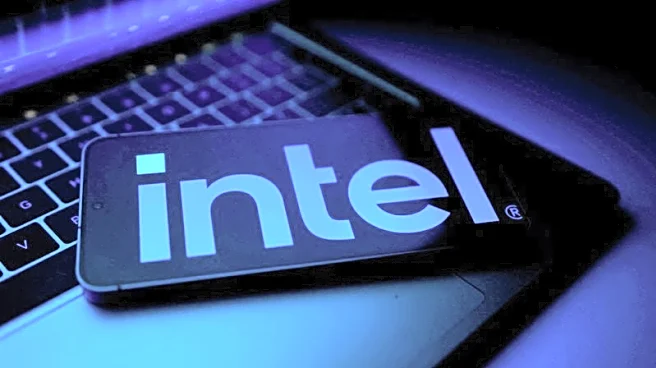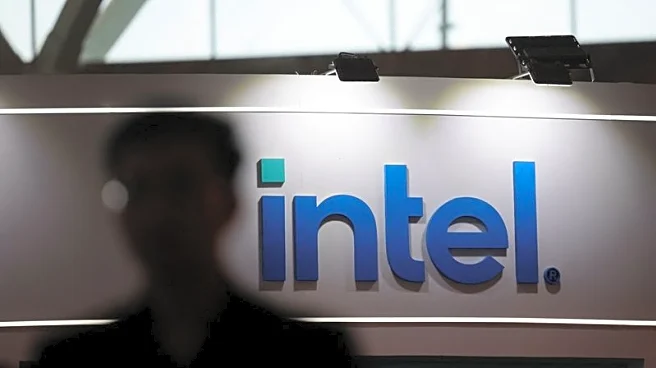What's Happening?
Nvidia's stock has been experiencing significant fluctuations throughout October 2025, driven by a combination of AI-driven growth and broader economic concerns. The stock reached an intraday peak of approximately
$195.6 earlier in the month due to strong demand for AI technologies. However, a mid-October pullback saw the stock drop by about 4.4% in one session, attributed to profit-taking and rising bond yields. Despite this volatility, Nvidia's stock has rebounded to around $182 as of October 24, 2025, maintaining its status as a leading player in the AI market. The company's recent performance reflects a 58% year-on-year increase, underscoring its dominance in the AI sector.
Why It's Important?
Nvidia's stock performance is a critical indicator of the broader tech industry's health, particularly in the AI sector. The company's ability to maintain high stock levels despite economic jitters highlights investor confidence in AI's long-term potential. Nvidia's growth is fueled by substantial demand for its AI chips, which accounted for a significant portion of its recent revenue surge. This positions Nvidia as a key player in the ongoing AI revolution, with implications for industries reliant on AI technologies. However, the stock's volatility also reflects broader market concerns, such as rising interest rates and geopolitical tensions, which could impact future growth.
What's Next?
Looking ahead, Nvidia's upcoming earnings report on November 19, 2025, will be closely watched by investors. The company is expected to report record revenue, and any deviation from these expectations could influence stock performance. Additionally, geopolitical developments, particularly U.S.-China relations, could impact Nvidia's ability to sell advanced chips in China, a significant market for the company. Investors will also monitor Nvidia's strategic partnerships and product launches, which are crucial for maintaining its competitive edge in the rapidly evolving AI landscape.
Beyond the Headlines
Nvidia's situation highlights the complex interplay between technological innovation and economic factors. The company's partnerships, such as its investment in OpenAI and collaboration with Intel, demonstrate strategic moves to secure its position in the AI market. However, geopolitical risks, including U.S. export controls on advanced chips to China, pose challenges that could affect Nvidia's revenue streams. These dynamics underscore the importance of navigating both technological advancements and international relations in sustaining growth.












